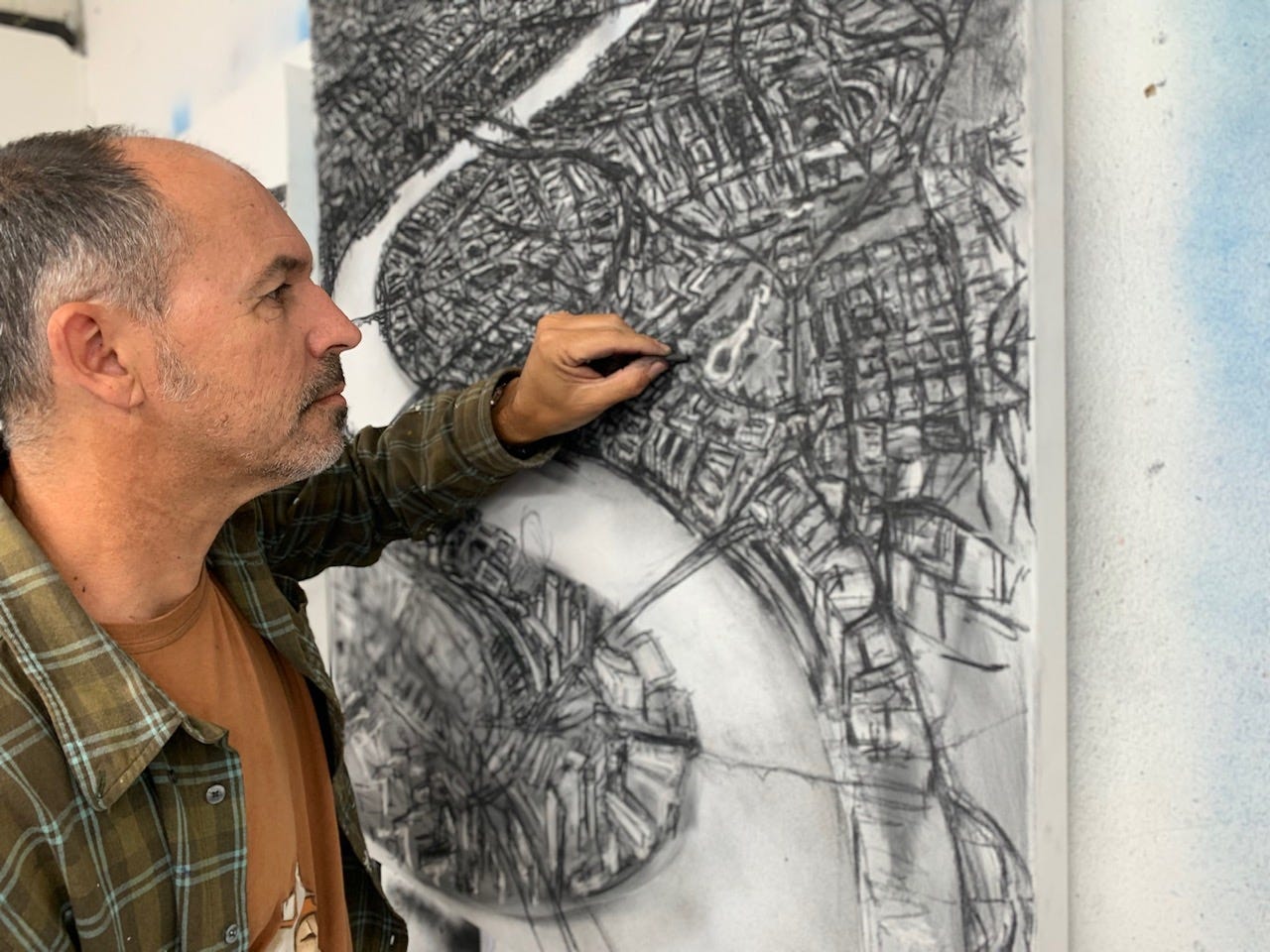In this new series, we talk to artists inspired by London and who incorporate this city into their art. In our first interview, we speak to Luke Walker who has walked its streets since childhood and made London his muse.
Hi Luke. Tell us about yourself and your journey into art
I began painting in my early 20s before diverting into Interior and Spatial design. I always loved art and I went to as many exhibitions as I could. In 2008 I began to wind down the design work, rented a small studio on the Wandsworth Road and began to paint again. I became quite prolific and had a pretty successful first show in a rented space in Battersea and thought, ‘This is easy.’ A year later I had another and it wasn’t so easy. I continued to work away but it was only when I undertook a part-time MA at The City and Guilds of London Art School in Kennington, where I was both challenged and encouraged to develop an art practice that it began to make sense. It gave me the voice and confidence to stop calling myself ‘just a painter’ and expand my toolbox and develop as an artist.
How did London become your muse and what have you learned about this city through your art?
I’ve lived in London since I was ten years old and was lucky enough to have the freedom and independence to explore it from a young age. The red bus rover was a 60p ticket that allowed a child to travel all day on the buses and I used to just get on a bus to the end of the line, just to find out that ‘Ball’s Pond Road’ really was a place. I remember visiting Shad Thames before it was developed, a run-down maze of windowless warehouses and pigeons. It might all sound alarming but it didn’t feel dangerous and there was always a bus home … eventually.
When I returned to painting, London became my natural subject matter, particularly the river, and Battersea to start with. But soon this expanded. I began documenting the changing city around me. I was really struck by the extension to Tate Modern by Herzog and De Meuron. It metamorphosed from a concrete ziggurat, into a scifi structure of scaffold, before emerging from this chrysalis as the extraordinary brick temple it has become today.
Beneath the paywall:
The part that walking plays in inspiring his art
Luke’s Hidden Gems in London
More examples of his phenomenal works
Keep reading with a 7-day free trial
Subscribe to Londonist: Urban Palette to keep reading this post and get 7 days of free access to the full post archives.





